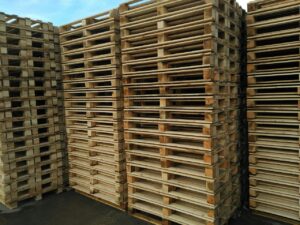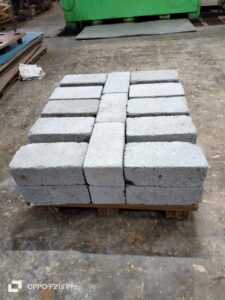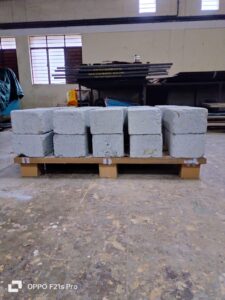Bamboo offers a sustainable, affordable, and resilient solution for housing in rural India. Bamboo houses are strong, flexible, and well-suited to India’s varied climate, making them perfect for rural communities. Below is a comprehensive step-by-step guide to constructing a bamboo house, covering foundational tips, structural techniques, and sustainable practices.
1. Site Preparation and Layout
- Choose the Location: Select a raised area with good drainage to prevent water accumulation around the structure, especially in regions prone to heavy rains.
- Clear and Level the Ground: Remove debris, roots, and vegetation from the area. Level the ground to ensure an even foundation.
- Mark the Layout: Use pegs and string to mark the house’s layout, outlining where the foundation, walls, and doors will go.
2. Laying the Foundation
The foundation is crucial for stability and durability, protecting bamboo from moisture and pests.
- Materials: Use stones, gravel, and a small amount of cement if available for the foundation. If cement is scarce, compacted stones can also be effective.
- Constructing the Foundation: Dig trenches around 1-2 feet deep for each wall and fill them with stones and gravel for stability.
- Pillar Bases: For areas where bamboo poles will be embedded as vertical supports, place larger stones or concrete blocks as a buffer between the bamboo and soil. This prevents moisture from seeping into the bamboo.
3. Selecting and Preparing Bamboo
Choosing the right bamboo and preparing it is essential for durability.
- Selecting Bamboo: Choose mature bamboo poles at least 3-5 years old for structural components as they have the highest strength and durability.
- Treating Bamboo: Cure bamboo poles to prevent decay and insect damage. Soak them in water for a few weeks or treat them with a borax-boric acid solution. You can also heat-treat bamboo by smoking it or exposing it to direct sunlight.
4. Building the Bamboo Frame
The frame is the main load-bearing structure, so strength and stability are crucial.
- Vertical Supports: Install thicker bamboo poles vertically at each corner and along the walls every 3–4 feet. Ensure they are anchored firmly into the foundation.
- Horizontal Support Beams: Connect the vertical supports with horizontal bamboo beams. Start with the bottom, then middle, and finally top layers for stability.
- Fastening: Tie bamboo poles together using natural fibers (such as jute rope) or metal bolts. Cross-brace the frame diagonally for additional stability in areas prone to high winds.
5. Creating Bamboo Walls
Bamboo walls provide structure and privacy while allowing airflow.
- Weaving Technique: Use thinner bamboo poles to create a woven pattern, similar to a traditional basket weave, which is strong and flexible. This method provides natural ventilation.
- Paneling Method: Arrange bamboo slats vertically or horizontally and secure them to the frame. This method is faster and offers a more modern look.
- Plastering Option: Apply a mix of clay, mud, and straw over the bamboo weave if you want insulated walls. This layer provides privacy, improves insulation, and adds a rustic touch.
6. Constructing the Roof
The roof design is essential for weather protection. A sloped roof is ideal for rain-prone regions, allowing water to run off efficiently.
- Rafters and Purlins: Use thicker bamboo poles as rafters and space them evenly. Add thinner bamboo purlins perpendicular to the rafters for added support.
- Roof Material: Cover the roof structure with thatch, bamboo mats, clay tiles, or corrugated metal sheets, depending on availability. Thatch is traditional and effective in warm climates but may need regular maintenance.
- Insulation: For added insulation, apply a layer of dried leaves or palm fronds under the main roof covering.
7. Flooring Options
For bamboo houses, flooring options depend on local availability of materials and personal preferences.
- Compacted Earth Floor: If resources are limited, level and compact the earth. Apply a layer of cow dung and clay to make it more durable and smooth.
- Bamboo Flooring: For a more finished look, lay bamboo mats or split bamboo slats. These can be installed directly over compacted soil or on an elevated bamboo frame.
- Stone or Tile: For increased durability, especially in high-traffic areas, stone or tile flooring can be installed. This will require a basic cement or mortar base.
8. Doors and Windows
Bamboo doors and windows are simple to construct and help improve natural ventilation and lighting.
- Door Frames: Use thicker bamboo poles to create sturdy door frames. Ensure they are securely fastened to the main frame.
- Bamboo Doors: For a basic door, weave thinner bamboo strips into a strong mat, or use a single bamboo panel. Hang the door with rope hinges or use metal hinges if available.
- Windows: For windows, cut small sections in the wall and secure thin bamboo slats as window bars. Simple shutters can be added using woven bamboo for privacy and protection.
9. Finishing Touches
Adding the finishing touches to your bamboo home enhances both comfort and durability.
- Waterproofing: Apply a natural sealant like lime wash to exterior walls to protect them from rain and moisture. Reapply seasonally for best results.
- Insect Repellent: Add a layer of neem oil or other natural insect repellents to the bamboo to prevent insect damage.
- Clay Plastering: For improved insulation, apply a mixture of clay, mud, and straw over the bamboo walls. This adds warmth and a rustic aesthetic.
- Ventilation: Ensure proper airflow by incorporating ventilated spaces at the roof level or small windows near the ceiling.
10. Maintenance Tips
Regular maintenance will keep your bamboo house in great shape for many years.
- Reapply Treatments: Reapply borax-boric acid or neem oil treatments on bamboo every couple of years to keep pests away.
- Check Roof and Walls: Inspect the roof for any leaks, particularly during monsoon season, and repair or replace thatch or tiles as needed.
- Fill in Cracks: Reapply clay plaster or other finishes to walls annually, as cracks can form due to natural material settling.






